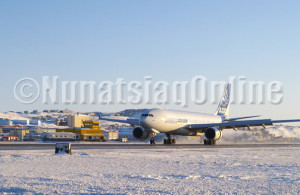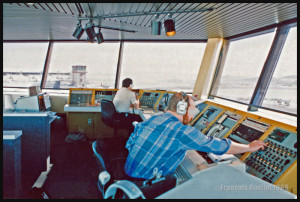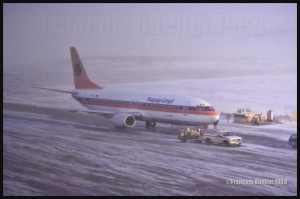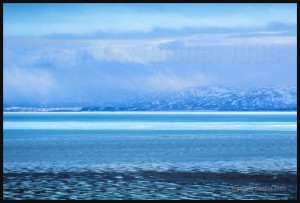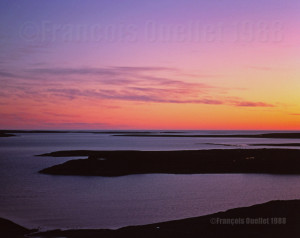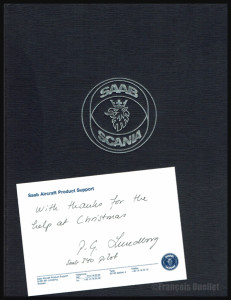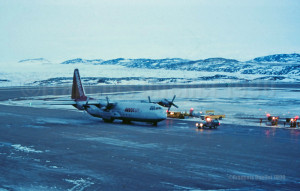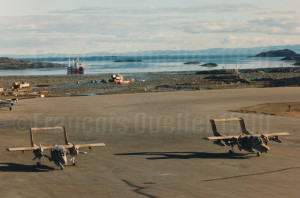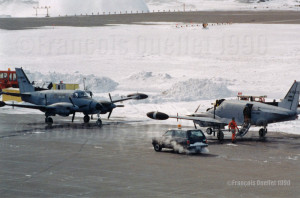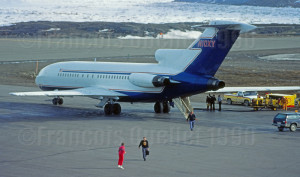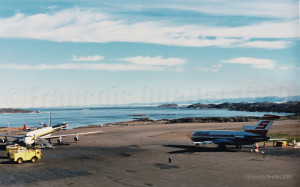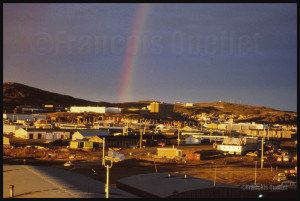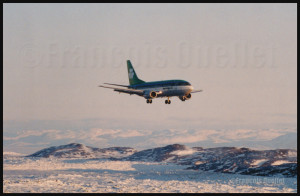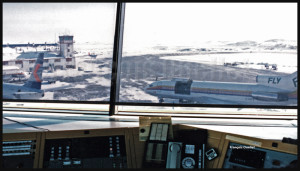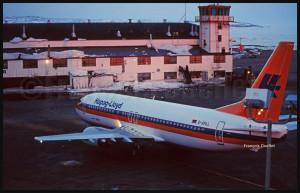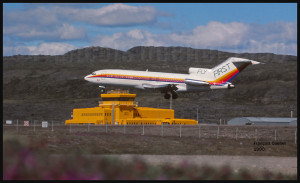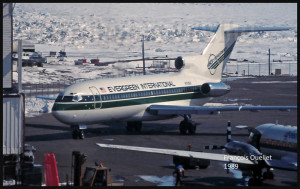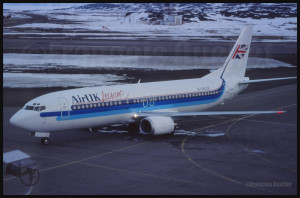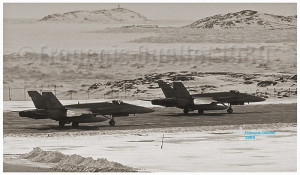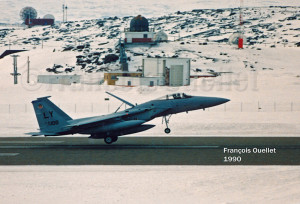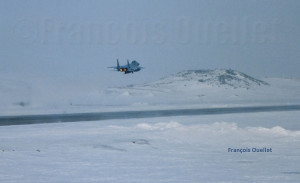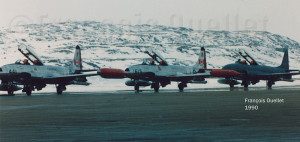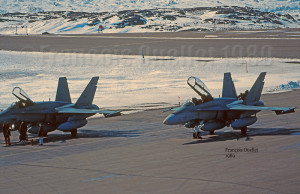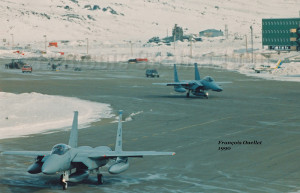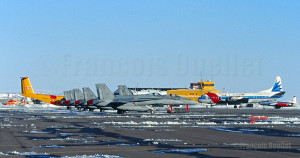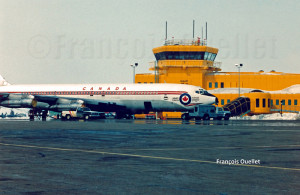The Iqaluit airport, on Baffin Island in the Nunavut, is a popular stopover for short and mid-range aircrafts needing to refuel when overflying the Canadian Arctic. Its 8,600 feet runway can accommodate all types of aircrafts. Airbus aircrafts like the A380, the A350-XWB and the A330-200F were tested there during several days to evaluate their performance under extreme cold temperatures.
Well-known actors, princes and princesses (among them some members of the British Monarchy) and many political personalities stopped in Iqaluit throughout the years. Even Nelson Mandela stopped by Iqaluit on his return trip from United States.
Around 1989-1990, the Sultan of Brunei and his suite also stopped in Iqaluit. The flight service specialists (FSS) were surprised to see that a Boeing 727 was not enough to accommodate the Sultan as two Gulfstream American business jets also landed few minutes before the 727.
Once the three aircrafts were parked on the apron, the Boeing 727’s front door was opened, a stairway was lowered and staff members rolled out a long red carpet. Two women got out of the airplane and started sweeping the whole carpet and, few minutes later, the Sultan stepped out for a walk and a breath of fresh air.
In less than an hour, the refueling was completed and everyone got back onboard their respective aircraft and left for Europe. It was the first time I was witnessing such a deployment of resources to carry a monarch.
But I had seen nothing yet. Few years later, I was transferred to the Transport Canada flight service station in Quebec City, which would later become the Quebec Flight Information Center (FIC) under Nav Canada. There, I could witness, with other air traffic services staff members, the frenzy surrounding the arrival of the President of the United States, Georges W. Bush, for the 2001 Summit of the Americas. That was certainly beyond measure…
For more real life stories as a FSS in Iqaluit, click on the following link: Flight service specialist (FSS) in Iqaluit
